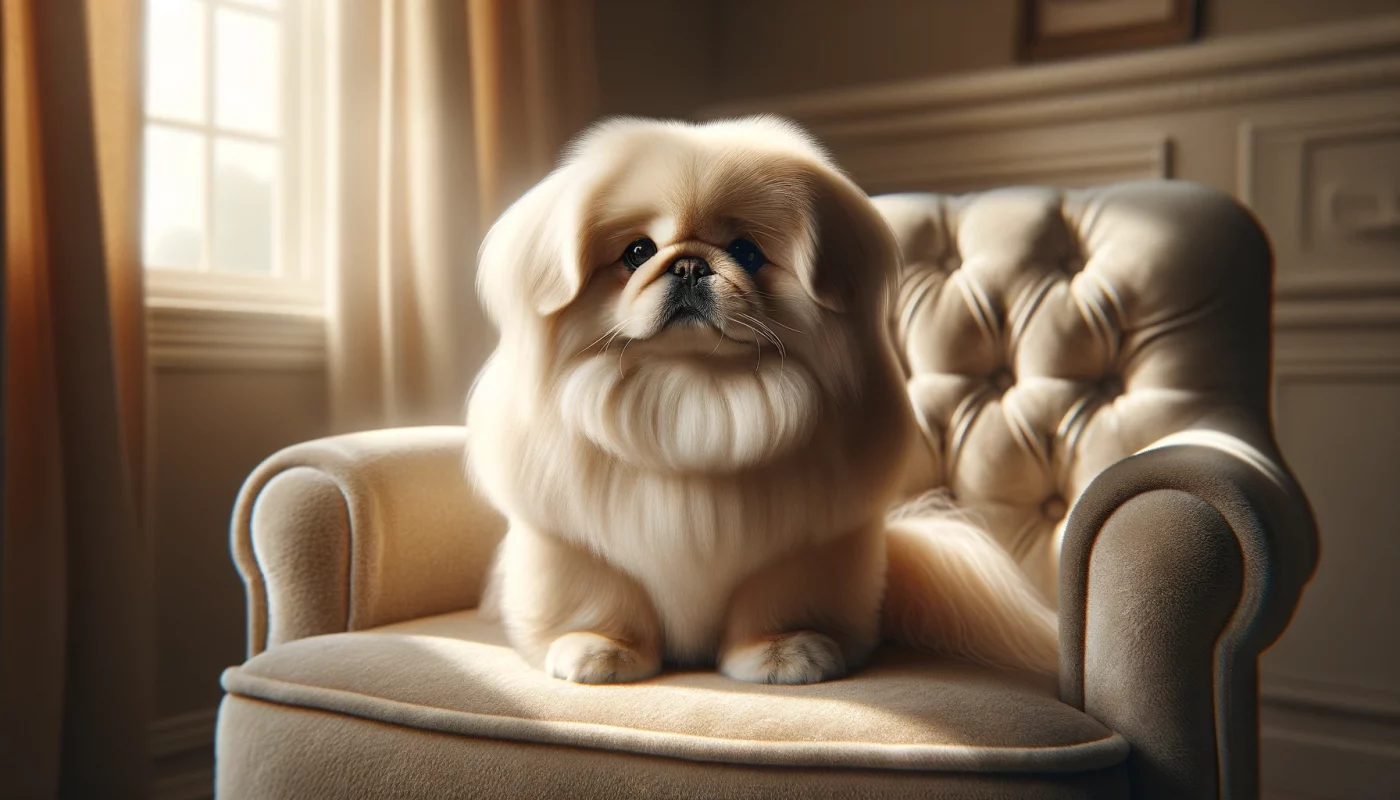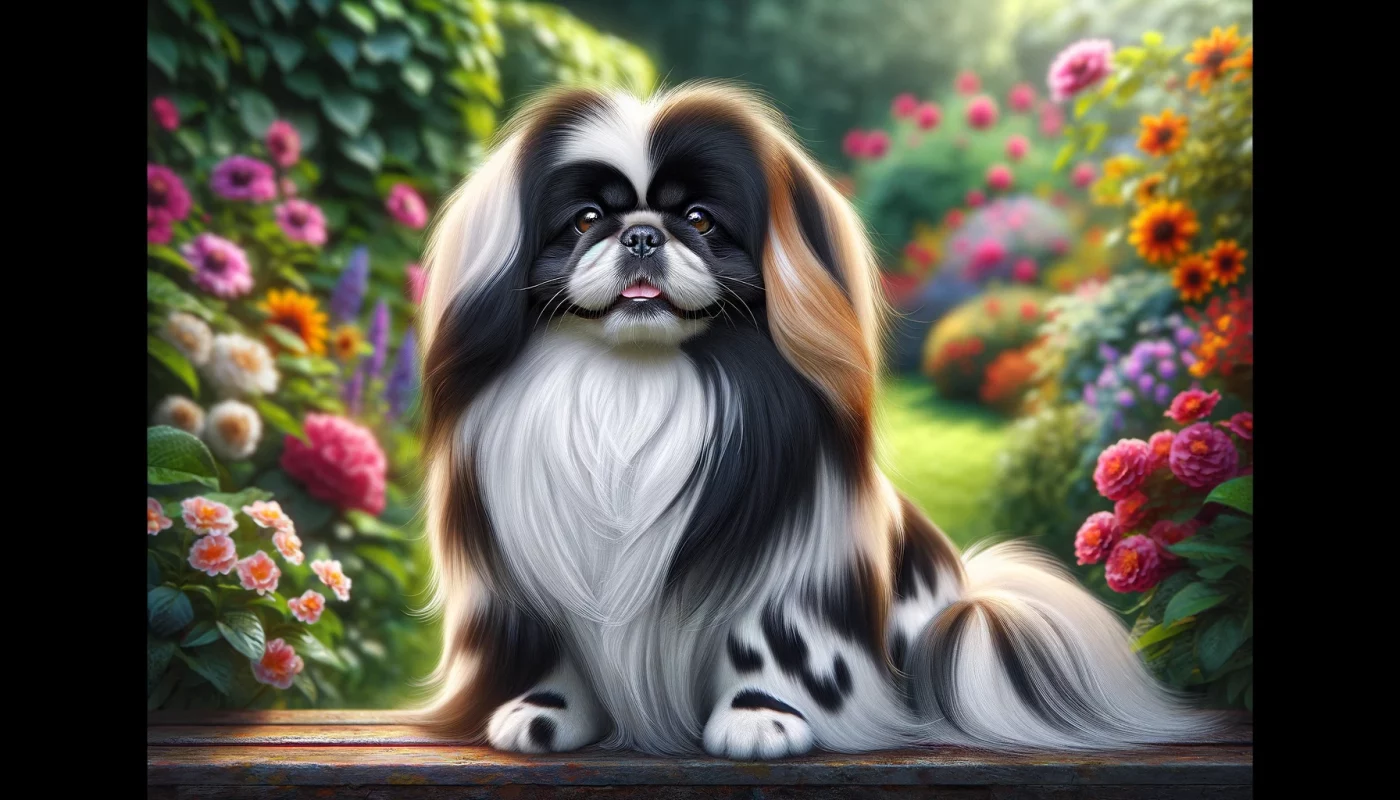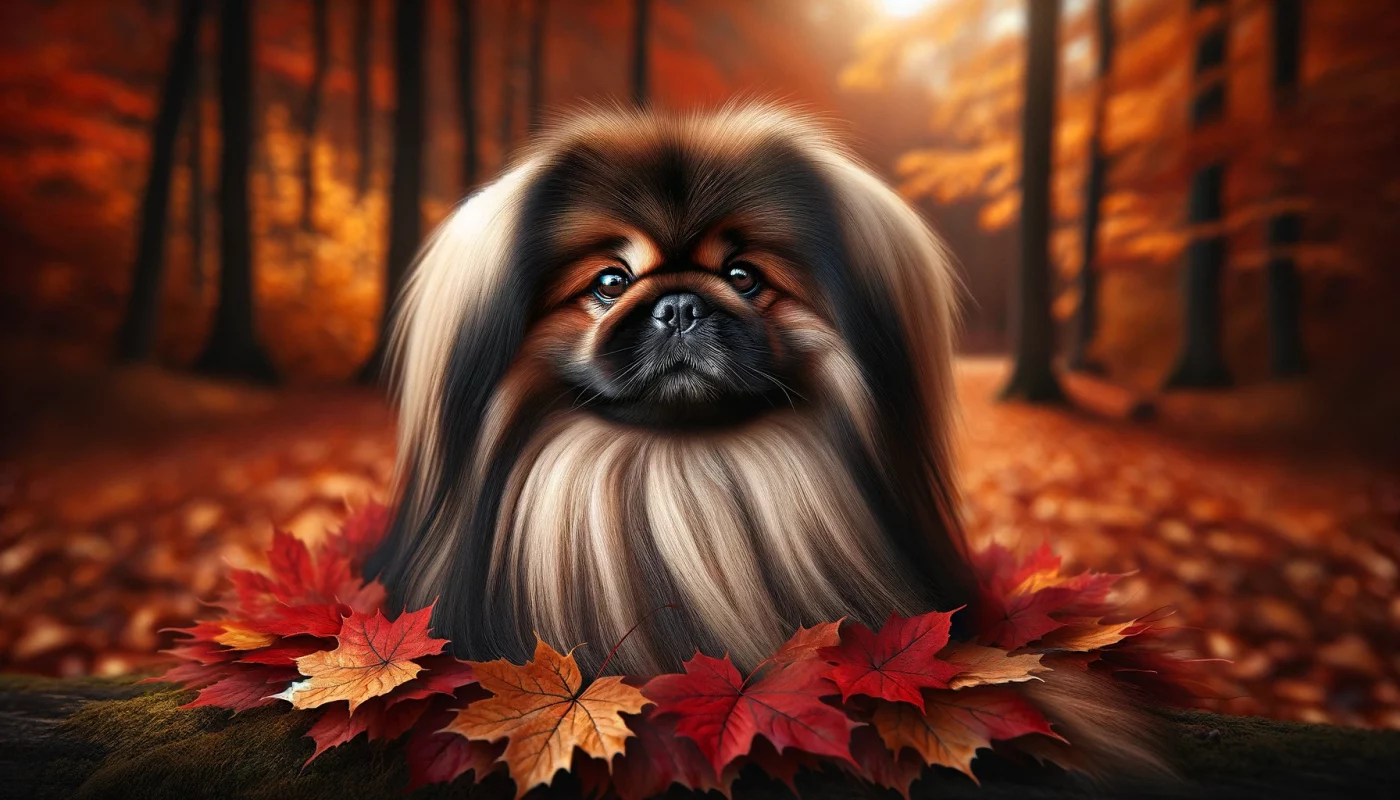
The Pekingese, a breed steeped in ancient Chinese history, is admired not only for its distinctive facial features and regal demeanor but also for its stunning variety of coat colors. Originally bred to resemble the lions of Chinese mythology, this breed carries a majestic air complemented by its lush, flowing coat. Pekingese colors range from rich solids to exotic multi-color combinations, each adding a layer of beauty to this already charming breed. In this article, we will explore seven stunning color variations of the Pekingese, each demonstrating the breed’s diverse genetic palette and how these colors enhance their aristocratic bearing.
1. Fawn
Fawn Pekingese possess a warm, light brown color that exudes a soft and inviting appearance. This color can range from a pale, creamy fawn to a deeper, rich tan that highlights the luxurious length and texture of their coat. Fawn Pekingese often have darker shading on their ears, muzzle, and the tip of their tail, which accentuates their expressive, soulful eyes and enhances their lion-like expression. This color variation is one of the most beloved, as it showcases the breed’s gentle yet dignified nature.
2. Black
A Black Pekingese is a striking sight, with a deep, glossy coat that makes their compact and sturdy body look even more substantial. The intense black color highlights their dense, mane-like fur around the neck and shoulders, embodying the lion-like appearance that the breed is known for. Black Pekingese have a certain mystique, with their dark coat contrasting dramatically with their light-colored eyes, giving them a penetrating gaze that is hard to overlook.
3. Grey
Grey Pekingese, often appearing in a silver-grey hue, carry an elegant and almost noble air that is quite fitting for this imperial breed. Their silvery coat catches the light, emphasizing the silky texture and feathering around their ears, legs, and tail. Grey Pekingese are particularly captivating in the sunlight, as their fur can shimmer and give off a luminous quality that enhances their regal bearing.
4. Cream
Cream Pekingese have a light, almost ethereal coat color that can range from nearly white to a more pronounced creamy shade. This lighter coloration beautifully showcases the Pekingese’s flat face and large, dark eyes, creating a stunning contrast that emphasizes their sweet, somewhat melancholic expression. Cream Pekingese are highly prized for their soft, almost plush-like appearance, which makes them appear as if they were a living teddy bear.
5. Parti-Color
Parti-color Pekingese feature a combination of colors, which can include any of the standard Pekingese colors interspersed with patches of white. This pattern adds a playful element to the Pekingese’s appearance, with the white patches often appearing over the eyes, on the chest, and paws, breaking up the darker colors and giving them a unique, individual look. Each parti-color Pekingese is distinct, with no two dogs having the same pattern.
6. Sable
Sable Pekingese are particularly stunning, with their fur showing a blend of colors, usually featuring darker tips on a lighter base. This coloration gives them a vibrant, dynamic look as if their coat is constantly changing shades depending on the lighting and angle. Sable Pekingese often look like they are glowing, with their fur offering an array of rich colors that enhance their flamboyant personality.
7. White
Pure white Pekingese are rare and considered highly desirable. Their snowy coats provide a perfect backdrop for their dark, expressive eyes and the black pigmentation on their muzzle and nose. White Pekingese can look particularly striking against darker backgrounds, making them stand out in any setting. Their pristine appearance requires diligent grooming to maintain, but it is a small price to pay for such breathtaking beauty.
In conclusion, the Pekingese breed offers a remarkable spectrum of colors that not only highlight their luxurious coats but also enhance their overall majestic presence. From the soft hues of cream and fawn to the striking contrasts of black and white, each color variation brings out a different facet of this breed’s rich heritage. Whether adorned in the singular beauty of pure white or the intricate shades of sable, each Pekingese has its own special allure, making this breed a perennial favorite among dog enthusiasts around the world.
Frequently Asked Questions About Pekingese Colors
1. What are the most common colors found in Pekingese?
The most common colors in Pekingese are fawn, black, and cream. Fawn Pekingese can range from light beige to a deep, golden hue, often with a black mask adding to their expressive faces. Black Pekingese are striking with their glossy, deep black coats, providing a regal and bold look. Cream Pekingese offer a lighter, more subdued appearance, ranging from nearly white to a soft buttery shade. These colors are prevalent due to their strong representation in the breed’s genetic pool, making them favorites among breed enthusiasts.
2. Can Pekingese have multi-colored coats?
Yes, Pekingese can have multi-colored coats, commonly known as parti-colored. These dogs exhibit coats with two or more colors, where white is typically combined with patches of another color like black, fawn, or grey. Parti-colored Pekingese are especially popular for their unique and striking appearance, making each dog distinctly individual in its pattern and coloration.
3. Are there any rare colors in Pekingese?
White is considered a rare color in Pekingese, often sought after for its striking contrast with the breed’s typical facial markings and dark eyes. Another rare color is the true sable, where each hair shaft has multiple colors, fading from light to dark. These rare colors can be more challenging to find and may be highly prized in the show ring or by breed aficionados.
4. Do Pekingese colors change as they age?
Yes, Pekingese coat colors can change as they mature. Puppies might start with a darker or lighter shade and develop their permanent color as they grow. For example, a sable puppy may appear significantly darker when born and lighten as it ages. This color transformation is part of the breed’s charm, giving owners the delightful experience of watching their Pekingese’s coat evolve.
5. How does sunlight affect the color of a Pekingese coat?
Sunlight can cause the Pekingese coat to lighten, especially in darker-colored dogs. Prolonged exposure to the sun can fade darker coats, turning rich blacks into browns or deep fawns into lighter shades. Owners should be mindful of excessive sun exposure to maintain the vibrancy of their Pekingese’s coat color.
6. What color eyes do Pekingese have?
Pekingese typically have dark brown eyes, which complement their rich coat colors and enhance their expressive faces. The darkness of the eyes is a breed standard and considered one of the defining aesthetic features of the Pekingese, providing a stark contrast to lighter coat colors like cream or white.
7. Is coat color linked to health issues in Pekingese?
Generally, coat color in Pekingese is not directly linked to health issues. However, like in many other breeds, certain genetic color combinations, particularly those involving dilute colors like blue or lilac (which are very rare in Pekingese), can be associated with specific health conditions like color dilution alopecia. It is essential for breeders to conduct health screenings and genetic testing to ensure healthy offspring, regardless of coat color.
8. Can Pekingese be grey?
Grey or silver Pekingese are quite rare but do exist. These colors typically manifest as a soft, silvery-grey shade that gives the dog an elegant, almost mystical appearance. Grey Pekingese can be particularly stunning with their contrasting dark eyes and lush coats.
9. What determines the coat color of a Pekingese?
The coat color of a Pekingese is determined by genetics. The combination of genes inherited from both parents influences the coat color, pattern, and texture. Dominant and recessive genes play a significant role in the resulting coat color variations seen in the breed.
10. How does grooming affect the appearance of a Pekingese’s color?
Regular grooming is crucial for maintaining the appearance and health of a Pekingese’s coat. Brushing helps distribute natural oils, which can enhance the coat’s sheen and vividness. Bathing, when done correctly, can brighten a dull coat and bring out the natural colors. For Pekingese with lighter colors, grooming is particularly important to prevent staining and matting, which can obscure their beautiful colors.
Source link












